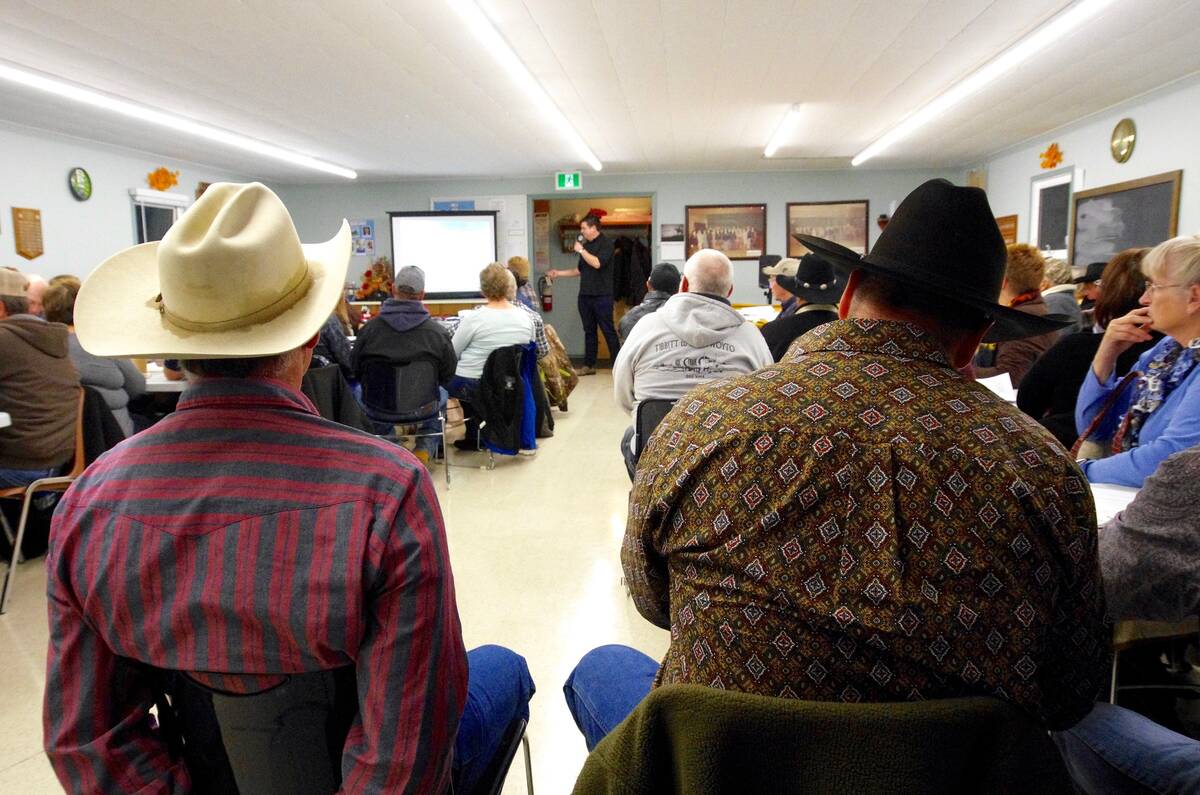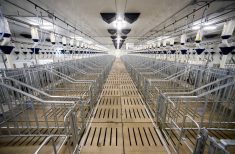The beef sector is hoping new data will help make the case to soften new animal transportation regulations that are currently officially in force, but are being slowly phased in.
The rules came into force February 20, and include controversial changes to mandatory rest stops the Canadian Food Inspection Agency (CFIA) argued will improve animal welfare, but left the sector steaming.
The changes drop maximum transport from 48 hours to 36, after which cattle must get at least eight hours of food, water and rest. Trucks will have an exemption if they hit that limit within four hours of their destination. Previously, rest periods were required to last only five hours.
Read Also

Don’t blow off that beef producer meeting
Local veterinarians and livestock experts often speak at beef producer group events. They have good advice for the farmer on vaccines, calving, beef herd management and more.
Now a study from Agriculture and Agri-Food Canada (AAFC), the Beef Cattle Research Council (BCRC) and academics from the universities of Calgary and Guelph are looking to bring new facts to the debate.
Researchers designed a three-year study comparing the impact of different rest lengths and different haul distances. The study took 320 weaned steer calves and put them on the road for either 12 or 36 hours. The groups were then given either four-, eight- or 12-hour rest stops or not rested at all. Cattle were then loaded and transported another four hours.
Calves were tested for weight, temperature and indicators like muscle damage or fatigue, dehydration, energy deficit, inflammation, injury, immune response and infection both before transport, directly after unloading at the rest stop, just prior to reloading and at the final destination. Those animals were then tracked for another four weeks to measure any longer-term impact.
First-year results from the study have been released. The researchers did not find a clear advantage to the rest stops, regardless of how long the cattle were in transit or how long they were off the truck.
About 96 per cent of the steers were alert at loading, regardless of rest, and 99 per cent arrived at the end destination without lameness. Eight- and 12-hour rests did give some weight gain, researchers noted, but that gain disappeared within seven hours, making it the more likely result of gut fill.
The only rest benefit found that unrested steers may have had slightly less energy. Feed intake, daily average gain and health in the month following transport showed no difference between groups. Shorter trips in general however, did, benefit cattle.
Reynold Bergen, science director of the BCRC, says that didn’t come as a surprise, but the findings about the lack of benefit of rest stops, especially for younger animals, was a surprise.
“Even after they had been in the truck for 36 hours, giving them a rest stop, no matter how long it was, didn’t improve any of the health or the stress or the growth or behaviour — any of the outcome variables they looked at, and there were dozens of them,” he said.
No basis
The sector, has argued that the regulations ignore existing data as well as early results from the current research.
Bergen said his organization was, “kind of taken aback a little bit,” when the changes were announced.
“We couldn’t find any research anywhere in the world that actually looked at whether providing a rest stop benefits cattle in transport,” he said.
The industry has commonly claimed that 99.95 per cent of long-haul cattle arrive at their destination in good condition, a number that is based on research conducted around 2005 in Alberta. That study looked at about 9,000 loads, Bergen said. He did note, however, that finished cattle were boosting that percentage, since those cattle were overwhelmingly healthy, young and strong. Calves and cull cows showed less optimal results, he said, noting that the industry looked to get a better knowledge of those gaps following the study.
Additionally, the sector argued, the recent changes raise questions on who will pay for additional rest stations to be built, as well as worries over biosecurity and cattle stress from being off-loaded and reloaded more often.
Future findings
The last two years of the study will provide some nuance to that finding, Bergen expects, “Either (to) confirm it or help explain, OK, here are the conditions under which a rest stop does or doesn’t benefit.”
Researchers did note that calves were already adapted to the feedlot and bunk feeding before transport. Because of that, preconditioning might factor into rest stop impact, researchers hypothesized, and may actually be a bigger indicator of animal welfare on long hauls.
They looked to fill that gap in the second year of the study.
“What they did this past fall was more or less repeat that study, except they were also comparing preconditioned to just straight off the ranch or through auction mart calves,” Bergen said. “So it’s a way higher risk group that they’re comparing to, so maybe we’ll find that those calves will benefit from a rest stop.”
Those second-year numbers are currently being analyzed, he added.
“There shouldn’t be any interpretation that we have any influence over the results. We want the right answer here,” Bergen said, noting that the AAFC is spearheading and bankrolling much of the study.
Local view
Manitoba’s cattle sector has long expected to be hard hit by the regulations. Most live cattle are either shipped two provinces west to Alberta, or to similar feedlots in Ontario or Quebec, the Manitoba Beef Producers (MBP) has argued, a challenge that cattle in places like Saskatchewan do not face in the same degree.
“We do believe that in transporting our cattle we need proper animal care and welfare, which is very important for our beef industry,” MBP president Dianne Riding said. “We as producers are committed to the best animal welfare practices, and this proactive approach includes maintaining animal health, minimizing stress when handling, treating and transporting animals and continually updating and improving practices.”
Cattle from Manitoba are on the road an average 16 hours and more than 95 per cent are in transit for less than 30 hours, according to Riding.
The organization supports, “research-based transportation changes and we want the results to improve our animal welfare,” she added.
The BCRC expects a full report on the three-year study by 2022.
















